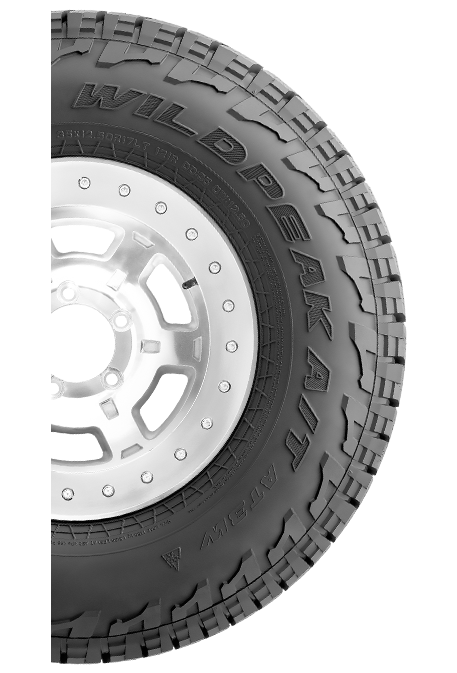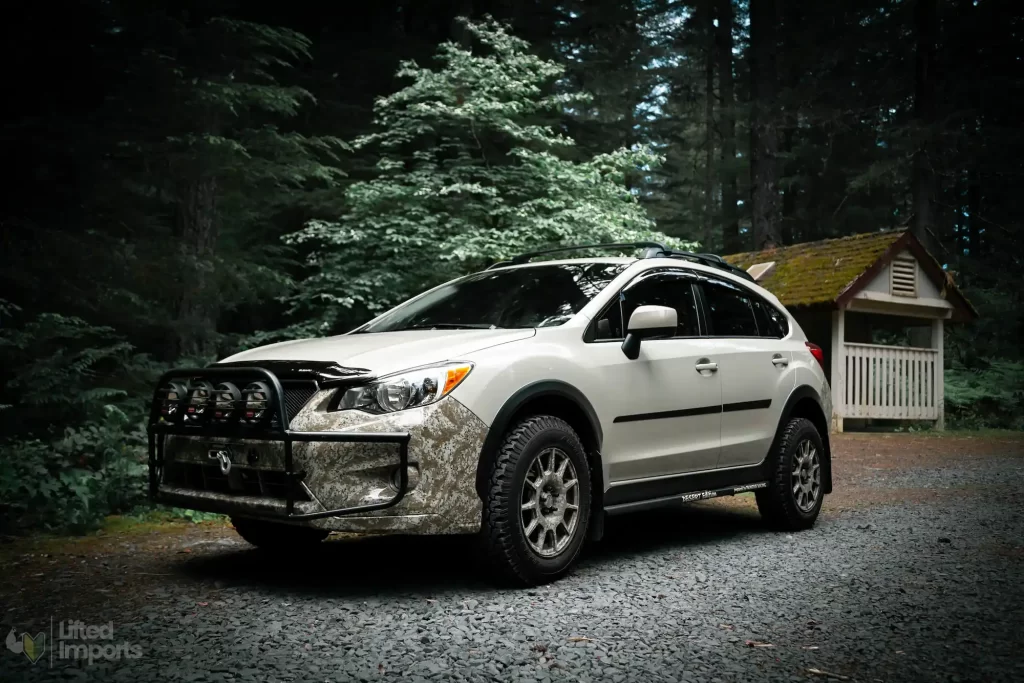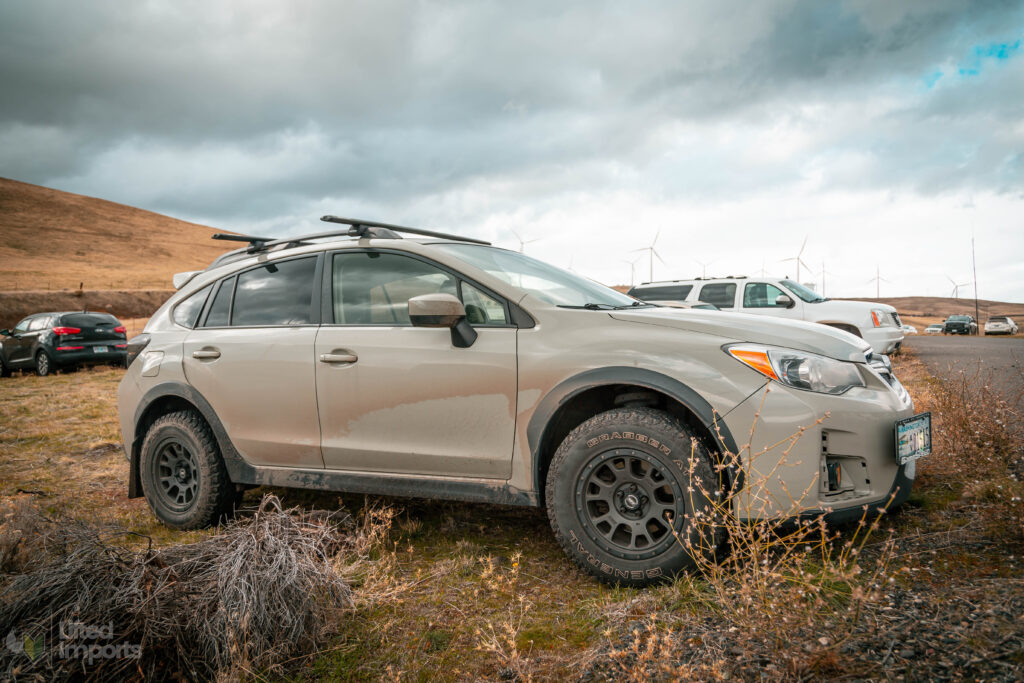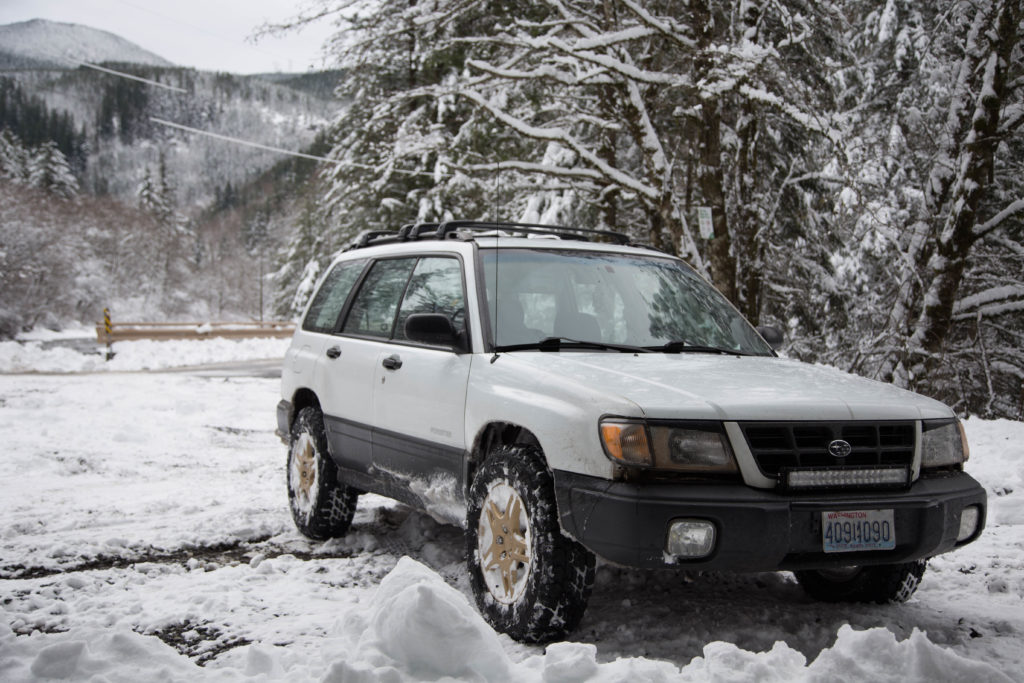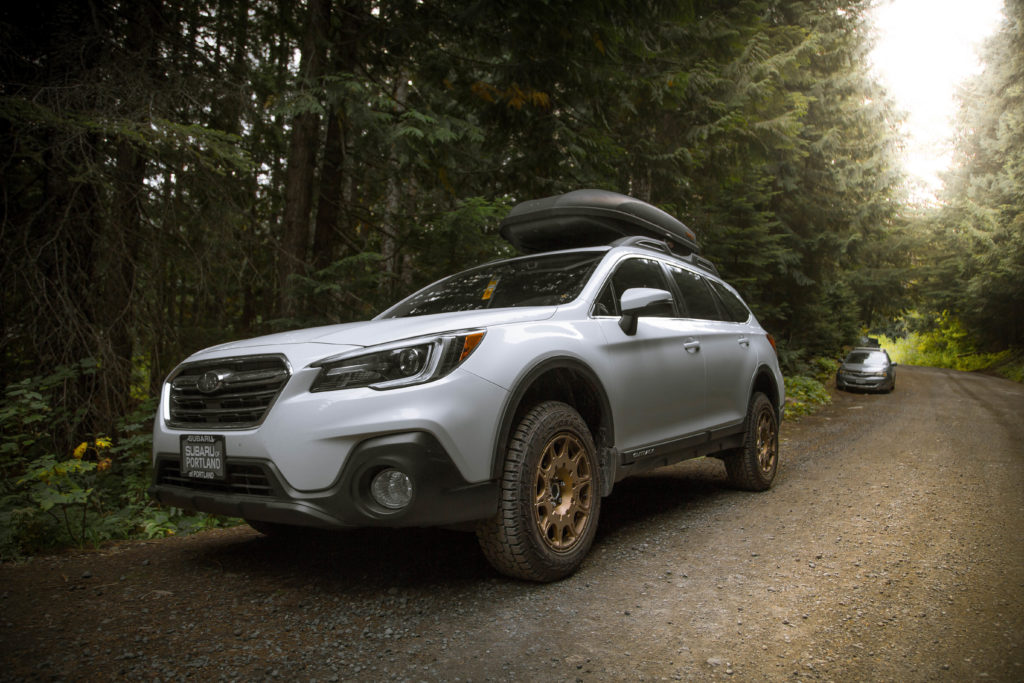Why Subarus Are Great In The Snow & When To Know If You Should Switch To a 4x4
Subarus have long been hailed as the go-to vehicles for conquering winter’s icy challenges with confidence. Renowned for their steadfast commitment to all-wheel drive (AWD) technology and an innate ruggedness, Subarus have earned a reputation as winter weather champions. In this article, we’ll delve into the reasons why Subarus excel in snowy conditions, shedding light on the unique features and engineering that makes them a top choice for those seeking safe and reliable winter mobility.
A few years ago I was broke and in college. I was snowboarding at least two times a week and making the trip up to the mountain in friend’s cars. But I eventually got to the point where I wanted a vehicle of my own that was capable of making it up the snowy mountain pass easily. I researched and looked at multiple options eventually landing on Subaru. I began saving money and doing whatever I could to finally get one. Once I did, I was not disappointed.
If you own a Subaru or are considering purchasing one, chances are you’ve heard that they do exceptionally well in the snow. Their famous Symmetrical All Wheel Drive system allows Foresters, Crosstreks, Outbacks, and the rest of the Subaru line up to handle some of the world’s snowiest conditions. But there’s more than just the AWD that allows them to do so well in snow and ice. Whether you’re a seasoned snow driver or preparing for your first winter adventure, Subarus are ideal for snowy conditions and provide a worry-free winter driving experience.
Table of Contents
Subaru's AWD system allows balanced control and proper power delivery
Many all wheel drive systems are not built the same way that Subaru designed theirs. Instead of being a front wheel drive car that shifts into AWD when the car senses slipping, Subarus are made to be in all wheel drive all the time. Some of their transmissions are set up with a 50/50 front and rear split, others are 60/40 and even 41/59. But regardless of which Subaru you own, it delivers power to all wheels as you drive down the road. Regardless, Subaru’s all wheel drive system allows for excellent vehicle control in snowy and icy conditions.
Nearly All Subarus Are AWD
While Subaru is nearly synonymous with all wheel drive, there have been a few Legacy and Impreza models that were offered decades ago in front wheel drive. But they’re quite rare. Subaru also introduced the BRZ in model year 2012. The BRZ is a rear wheel drive sports car that is a blast to drive in the summer and on dry pavement. The BRZ is the ONLY car currently produced by Subaru that is not an all wheel drive vehicle. Aside from this, every current model comes standard with their symmetrical all wheel drive.
The following Subarus are available in the US market with AWD coming standard even in base model trim levels:
- Forester
- Outback
- Crosstrek
- Legacy
- Ascent
- Impreza
- WRX/STI
Subaru's symmetrical AWD system is well balanced
Not only are they mechanically superior to other AWD and 4WD systems in the snow, they have physics on their side as well. The name Symmetrical AWD quite literally means that Subaru’s drivetrain design can be cut down the middle from front to back and be almost completely identical. Rather than having a side mounted transmission and heavy offset transfer cases that can cause the vehicle to handle poorly, Subaru’s give a well balanced feeling in all situations. In addition to being an all around more enjoyable driving experience, it’s also much safer.
There have been times when my Subaru began to slide in the hard packed snow and I was able to easily recover and point it back down the road safely. I will likely never put my family in a different vehicle.
In the illustration below, you can get an idea of how Subaru’s look underneath the car. They’re very well balanced and symmetrically designed for control and safety:
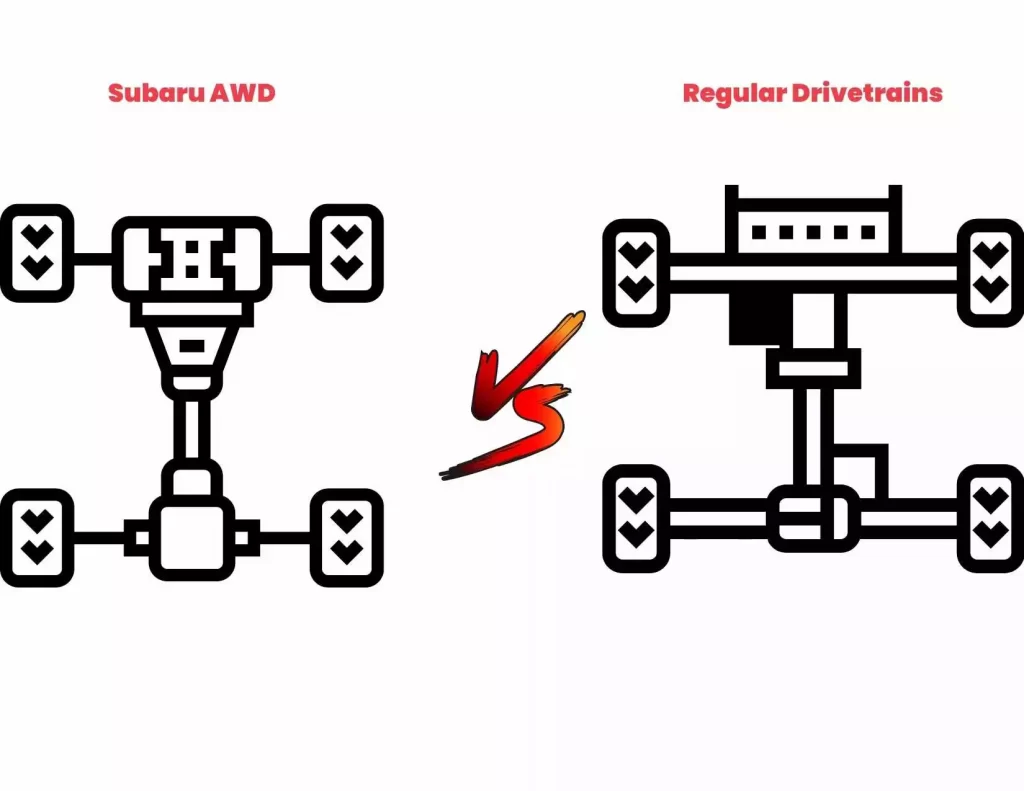
Related Article:
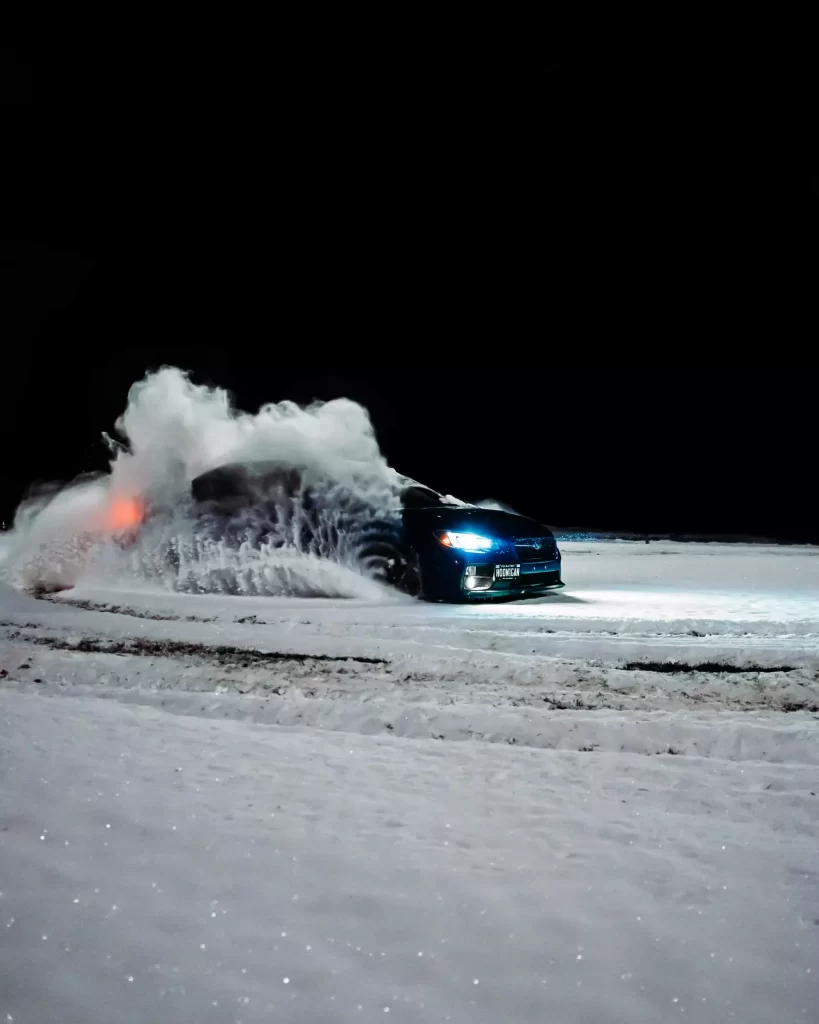
2024 Top Picks | Best Snow Tires For Subaru (Fits All Budgets)
2024 Top Picks | Best Snow Tires For Subaru (Fits All Budgets) While some models may come standard with a great tire, many vehicles come
Easier to Fit bigger snow tires
When I purchased my first car it came with a set of Bridgestone Blizzak snow tires (one of my favorite winter tires to this day.) I had them mounted and immediately noticed that they were rubbing on the inside of the fender liners. My Subaru was a 1998 model that was made back when they had smaller wheel wells.
Current model Subarus actually have a lot of room to fit a slightly larger tire on the vehicle. While the manufacturer would likely advise against this, there are some situations where a snow tire isn’t available in the exact size your car came with from the factory. Some folks also just want the extra ground clearance in the snow that comes with a taller tire.
We’ve talked to people that have fit a 1.2 inch oversized tire on their Forester, Outback, and Crosstrek with no issue. Again, this isn’t advised but many people do appreciate the option to do so.
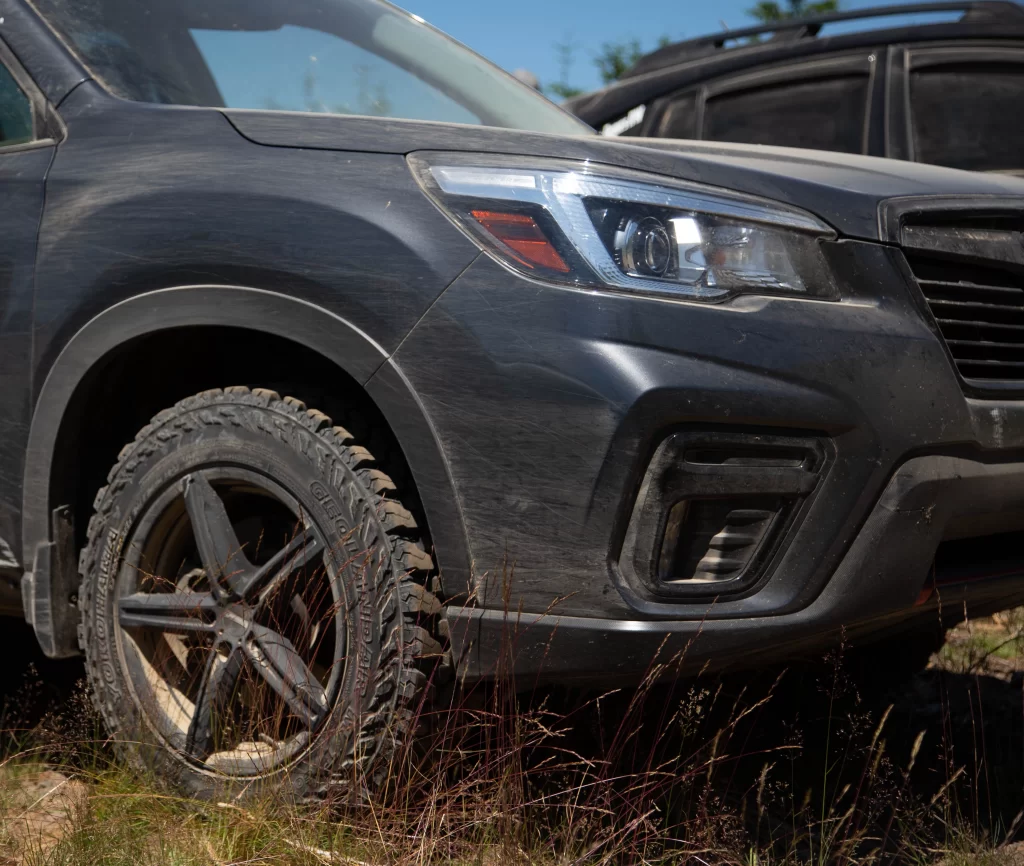
Bonus: Best Off-road Tire For Snow
Our pick for best all-around offroad tire with good snow performance
The Wildpeak wins our top pick for being aggressive, lightweight, and 3 Mountain Peak Snowflake rated. This tire has become a favorite among lifted Subaru owners since it delivers great performance without weighing down the drivetrain. It is an offroad tire first and foremost. But it provides unbeatable performance in all areas.
We highly recommend it to anyone who wants a versatile tire without spending a ton of money.

Cost:
2 / 3
Weight:
2 . 5 / 3
Click The Links Below To Find A Set Online:
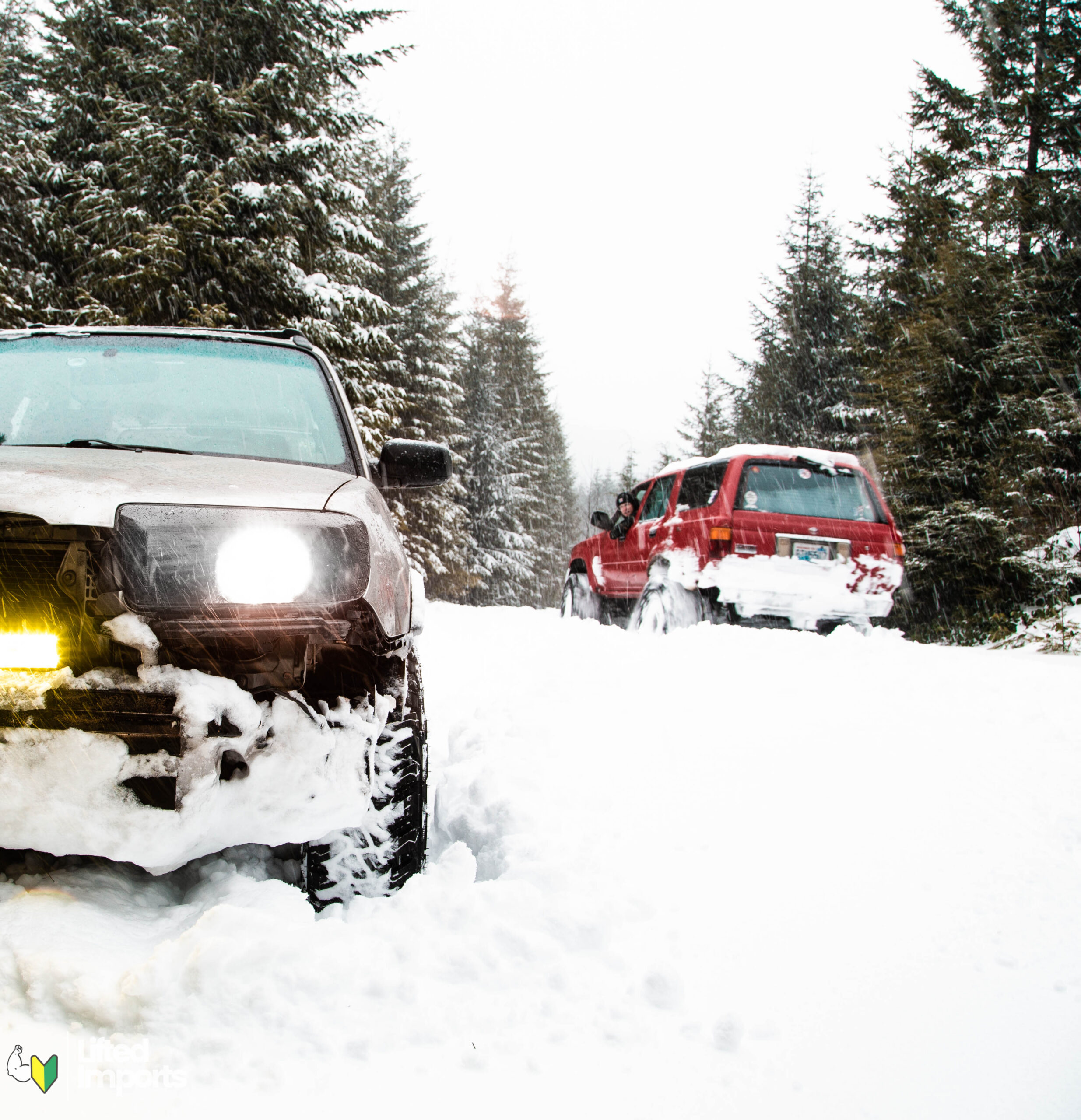
On this day we pushed through 2 feet of fresh snow for over a mile with some sections being uphill.
Ground clearance helps drivers push through even the harshest snowfalls
Most of Subaru’s flagship lineup currently boasts 8.7 inches of ground clearance. To put that into perspective, the 2020 Jeep Grand Cherokee has 8.6 inches. The current Wilderness Edition Subarus offer an even more impressive 9.2-9.5 inch ground clearance straight from the factory.
While ground clearance isn’t the only factor when choosing a vehicle for snow use, it’s extremely helpful. You’re less likely to damage the underside of the car on hidden objects in the snow and you’ll escape the risk of being high centered easily.
Having a car with more ground clearance is simply a better choice for driving in deeper snow. The extra clearance on Subarus help them avoid having snow gather up against the bumpers and even makes simple things like entering and exiting the vehicle in deep snow much easier.
Low Chance Of High Centering
Speaking of being high centered in the snow, the independent suspension on Subarus makes the underside of the car less prone to gathering snow. This has benefitted me many times in deep snow situations. Most 4WD SUV’s have at least one solid axle that helps them perform really well off-road. However, I’ve watched trucks of similar height get stuck on their suspension and drivetrain components in the snow.
You can see below how the Subaru axles articulate up into the rear differential. But on solid axle vehicles the axle will never change position in relation to the wheel. This can actually create a place for hard packed snow and other objects to get lodged – causing the vehicle to lose traction or become high centered.
Subaru axles:
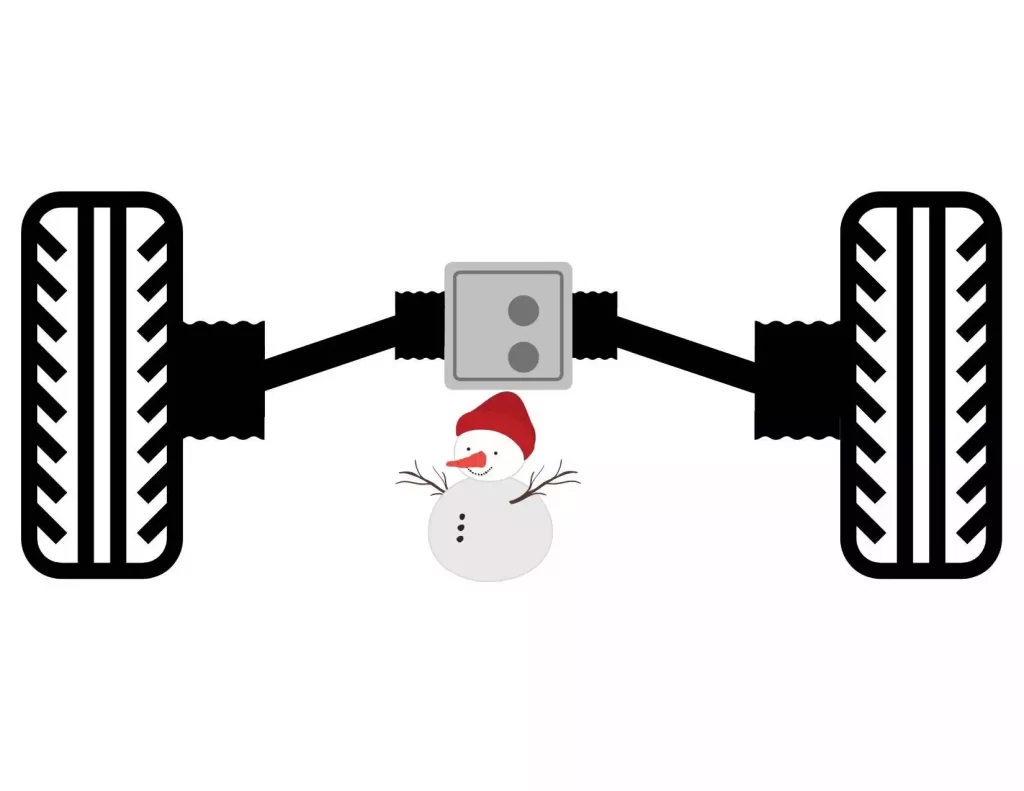
Solid axles:
(Poor Snowman)
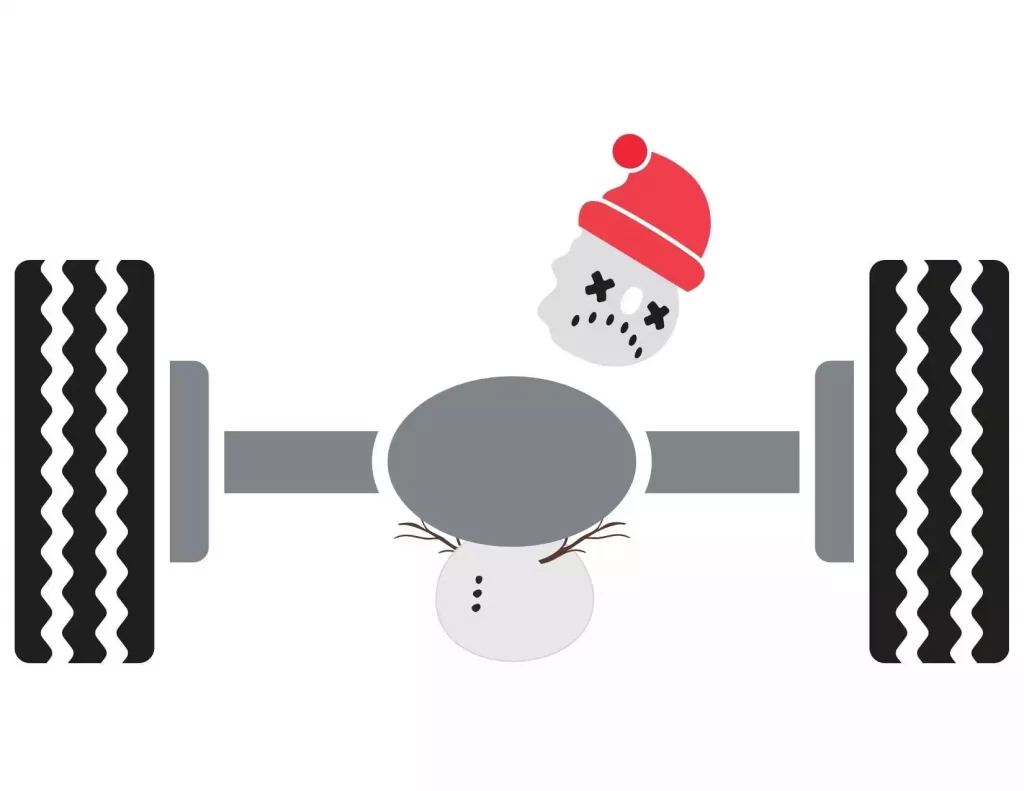
Subarus with CVT transmissions offer the powerful X mode feature
Subaru’s X-Mode is an off-road assistance system that comes standard on most current model Outbacks, Foresters, Imprezas, Legacies, and Crosstreks.
X-Mode coordinates the throttle, the All Wheel Drive, the CVT, ABS, and the traction control systems to deliver maximum control in low-speed, snowy situations. One area where it really shines is when trying to climb slick inclines. It does really well helping drivers maintain traction as they ascend obstacles that would otherwise be extremely dangerous.
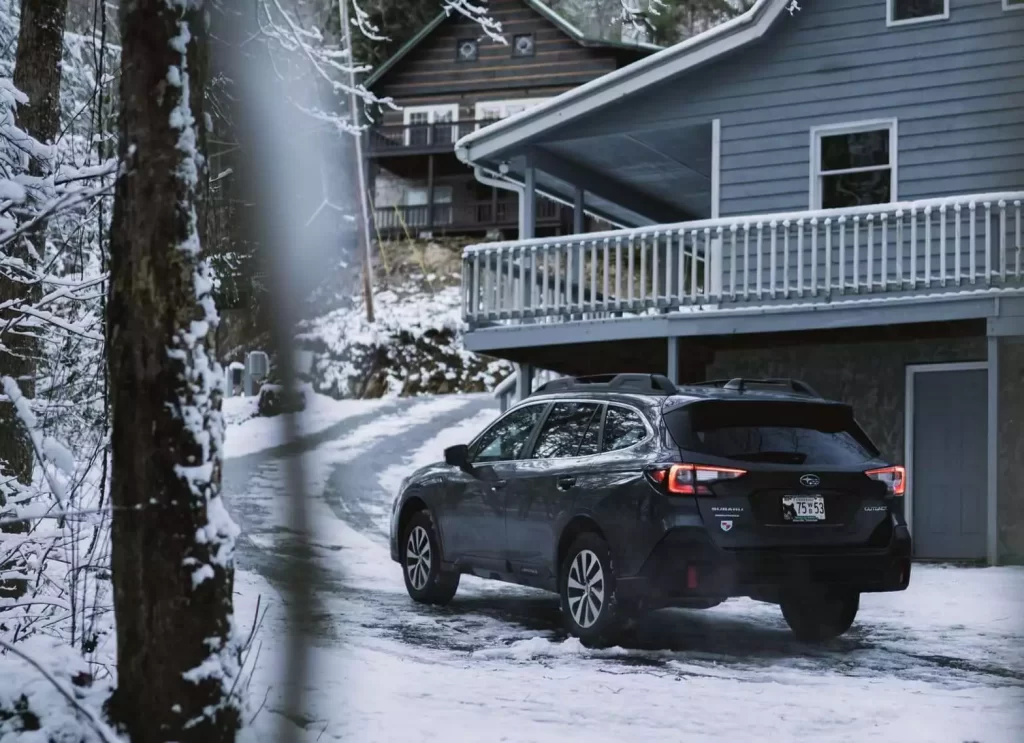
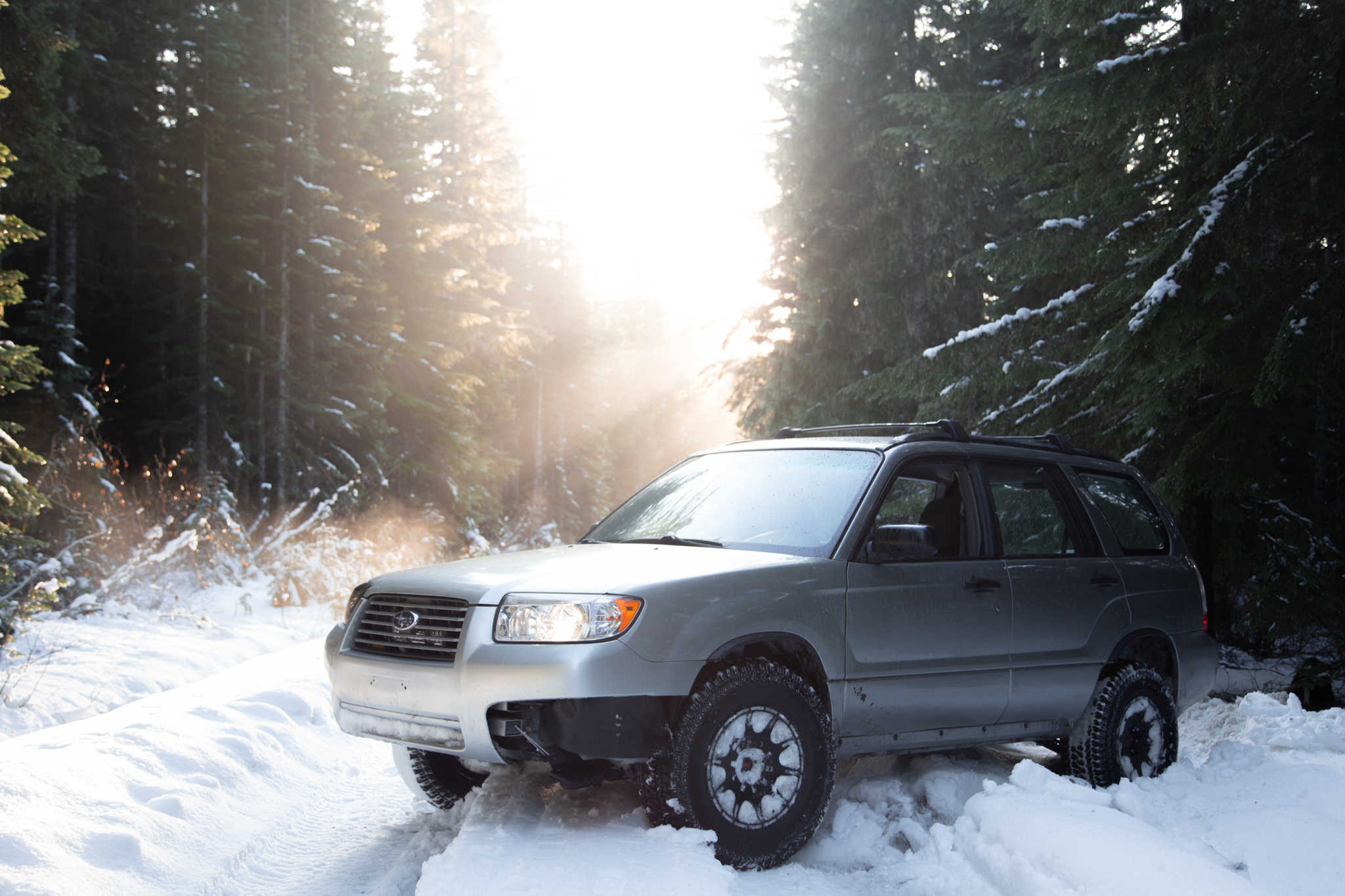
Models equipped with limited slip differentials will have even more grip in the snow
My current Subaru arrived from the factory with an open rear differential. It was a great diff and did it’s job, but I wanted something with just a bit more grip. So I swapped it out with a matching 4.44 limited slip (LSD) rear diff from a Forester XT before the snow started falling. I was blown away by how much better the car was able to pull through deep snow by locking up the rear tires and delivering more power.
If you want to know if your Subaru has an LSD, have your mechanic put the car on a lift. Rotate the rear wheels by hand one at a time. If the opposite wheel spins in the same direction, you have a limited slip differential.
Tight turning radius And Narrow Wheelbase allows drivers more options for navigating Narrow spaces in the snow
After driving many other vehicles, one thing I’ve noticed is that Subarus have the best turning radius of any car I’ve been in. This has helped me get out of some pretty dangerous situations on snowy trails.
Since they’re much more narrow than full sized trucks, I’ve been able to squeeze my way through some seriously small obstacles that wouldn’t be feasible otherwise. Or when I’ve needed to turn around on a snowy road, I’m able to do it easily with no issue.
Installing a lift kit is relatively affordable and easy
If you plan to take your Subaru off the main roads during the winter, installing a lift kit might be the best option. Having extra ground clearance is the best way to have a little more recreational fun in your car during snow season and it honestly just looks better!
I enjoy doing snow hikes occasionally and that means I need to navigate rugged forest roads. Having my Forester lifted has allowed me to safely get anywhere I’ve wanted even in deep snow. Fortunately, there are multiple options for lift kits that you can install at home or have professionally done. The process is relatively simple and 1-2″ kits can be had for $299-$699 in most cases.
If you’re considering a lift kit for your Subaru check out this article before you choose and avoid some common mistakes that we made when buying our first lift: Best Subaru Lift Kits
When To Avoid An AWD Car In The Snow & Switch to A 4x4
One thing to consider with most all wheel drive vehicles is that they lack the reduction gear that 4WD cars have. There may be situations where you will be unable to power through deep snow without a low gear. If you live in an area where you plan to be “plowing” in snow, a true 4X4 will be better suited. Pushing through anything deeper that a foot of snow is very challenging in a Subaru that is not lifted. I’ve been able to make it through 2 feet of snow in a Subaru. But my Subaru has a lift kit installed and had extremely aggressive mud tires with full tread depth. I also had a much larger rig with me that was able to pull me out if I had gotten stuck. I would never recommend doing something like that alone in a Subaru.
In conclusion, Subarus have earned their reputation as exceptional winter vehicles thanks to their symmetrical AWD design, and balanced handling. This engineering excellence enhances control and safety, not only in snowy conditions but across various terrains. The ample ground clearance, tight turning radius, and narrow wheelbase further bolster their performance in navigating snow-covered landscapes.
Additionally, Wilderness Edition Subarus and Subarus equipped with limited-slip differentials and the X-Mode feature provide added traction and control, particularly in challenging winter scenarios. However, it’s worth noting that for plowing through extremely deep snow, a dedicated 4X4 vehicle with a low gear may be more suitable. Nevertheless, for most winter driving situations, Subarus offer a reliable, versatile, and safe choice, making them a go-to option for those seeking confidence and capability in snowy conditions.
Articles You May Like:
As an Amazon Associate, we may earn from qualifying purchases

